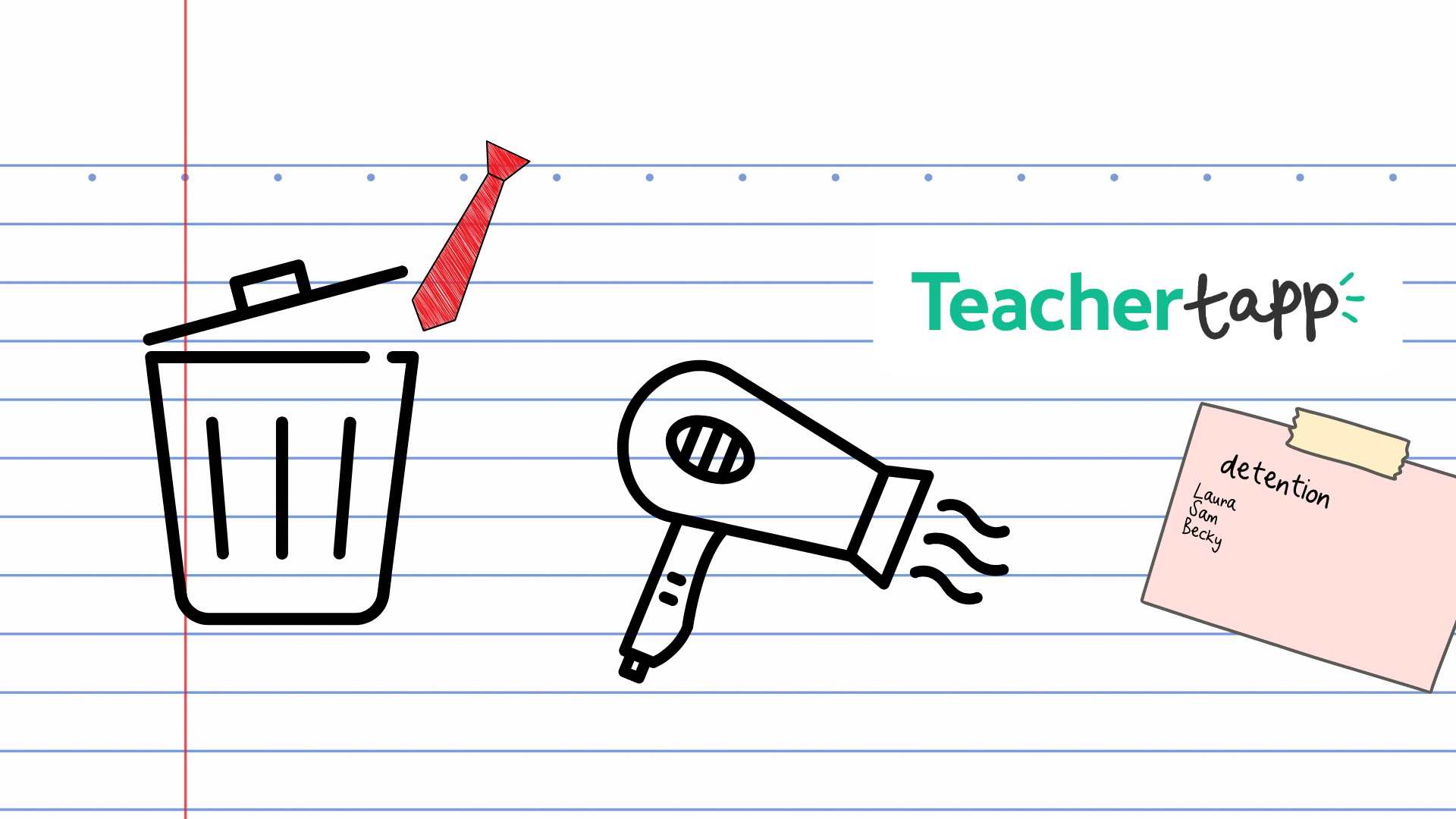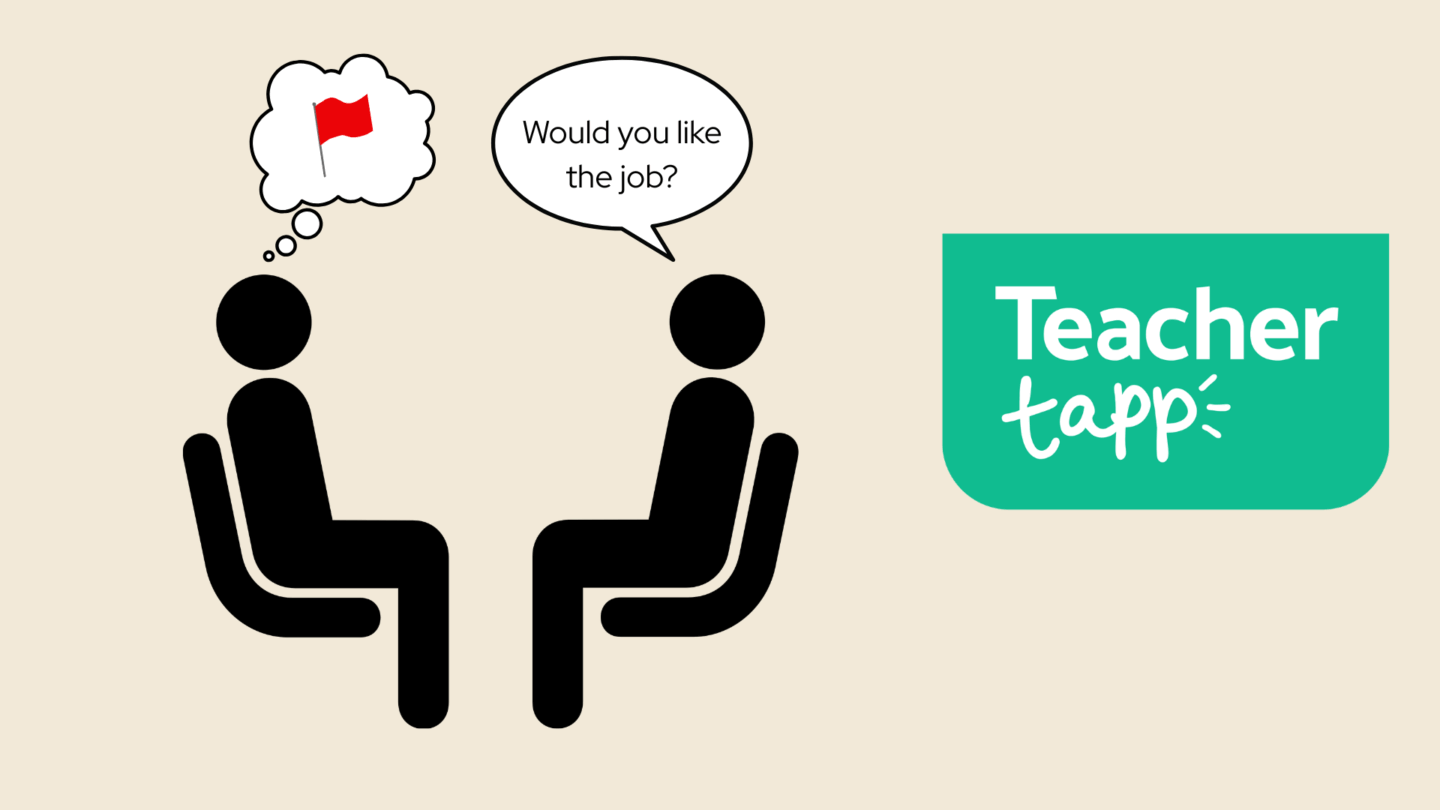Hey there, Tappsters!
Last few days of the prize draw! This month, one lucky Teacher Tapper will win a £500 grocery voucher.
Taking part is easy! All you need to do is tap! Read more about the details of the comp and see the full terms and conditions here.
We’ll share the winning ticket codes on our socials, and email the winners too.

Now, let’s find out what you have told us this week…
Following the behaviour policy
The behaviour policy is there for all teachers to enforce and students to follow – but who is following those policies? And does it make a difference to what happens in that lesson?
First off – a massive 92% of teachers are following the behaviour policy either “every” or “most” lessons. So who are those who ignore the rules?
Classroom teachers less likely to follow policy
Teachers without responsibilities are far less likely to follow the behaviour policy all the time compared to their more senior counterparts, with fewer teachers classroom teachers following their policy “every lesson” compared to senior leaders and headteachers (35% vs 59%).
Why might this be? It’s hard to know exactly – but one possible reason could be the difficulty in enforcing a policy.
For example, 33% of classroom teachers had ignored behaviour in the past month because they were worried about a parent complaining on social media, compared to 19% of senior leaders and headteachers.
In secondaries, classroom teachers just under half (48%) did NOT issue a detention that week despite the behaviour policy saying they should. But why? The most common reason was to avoid conflict (17%), while 13% thought the student was ‘generally good’, and 10% were too busy – just 6% did it because they didn’t agree with the policy.
If teachers think the school behaviour policy is ineffective, will they still follow it?
It’s arguably harder to enforce a rule you don’t agree with – but does a disconnect with the behaviour policy lead to more teachers not following the rules?
Yes – among those following it every lesson, personal feelings about that policy make a difference.
Of those who think it’s effective – 51% will follow the policy every lesson – but just 29% will if they do not think it’s effective – and 30% if they are undecided about the policy.
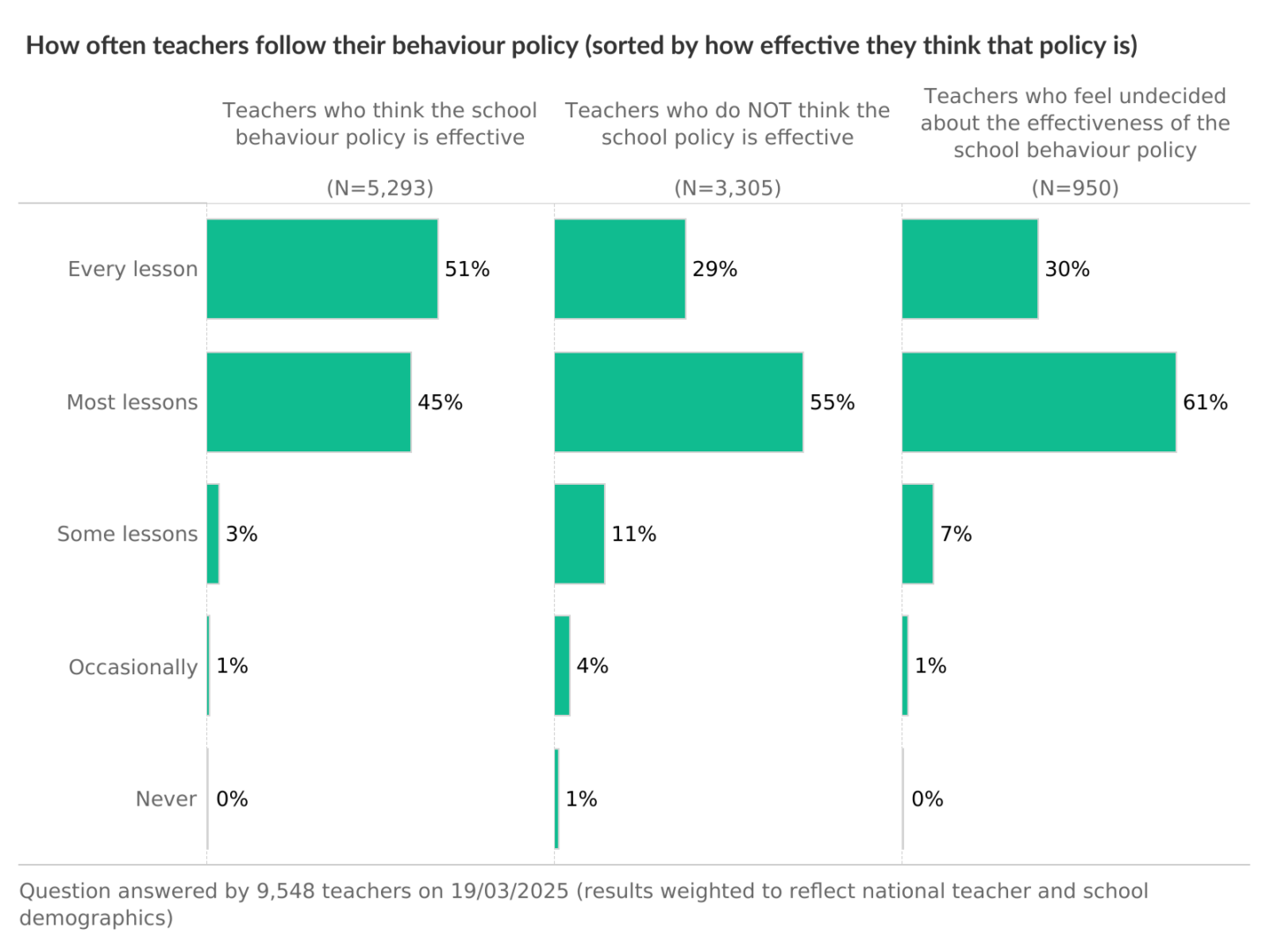
Perhaps the message to take from this is that it isn’t just what is ON your behaviour policy, but how your teachers feel about it that matters?
If behaviour in schools interests you, then you can read more about the ‘behaviour barometer’ work School Surveys have done in this Schools Week article.
Why are you leaving?
Behaviour popped up again in the responses to a question about leaving teaching.
Classroom teachers
The top reason classroom teachers in primary AND secondary was workload (29% for primary classroom teachers and 25% for secondary classroom teachers).
In secondaries – classroom teachers were more likely to want to leave because of behaviour when compared to primary classroom teachers (21% vs 17%).
In primaries, school leadership was the second most common response for classroom teachers (18%) and in secondaries, it was third (16%).
Middle leaders
In secondaries, more middle leaders give workload as the reason they consider leaving (30% vs 25% classroom teachers and 24% senior leaders).
In contrast, in both primary AND secondary, they’re much less likely to say poor pupil behaviour when compared to classroom teachers (in primary 11% vs 18%, and secondary 13% vs 21%).
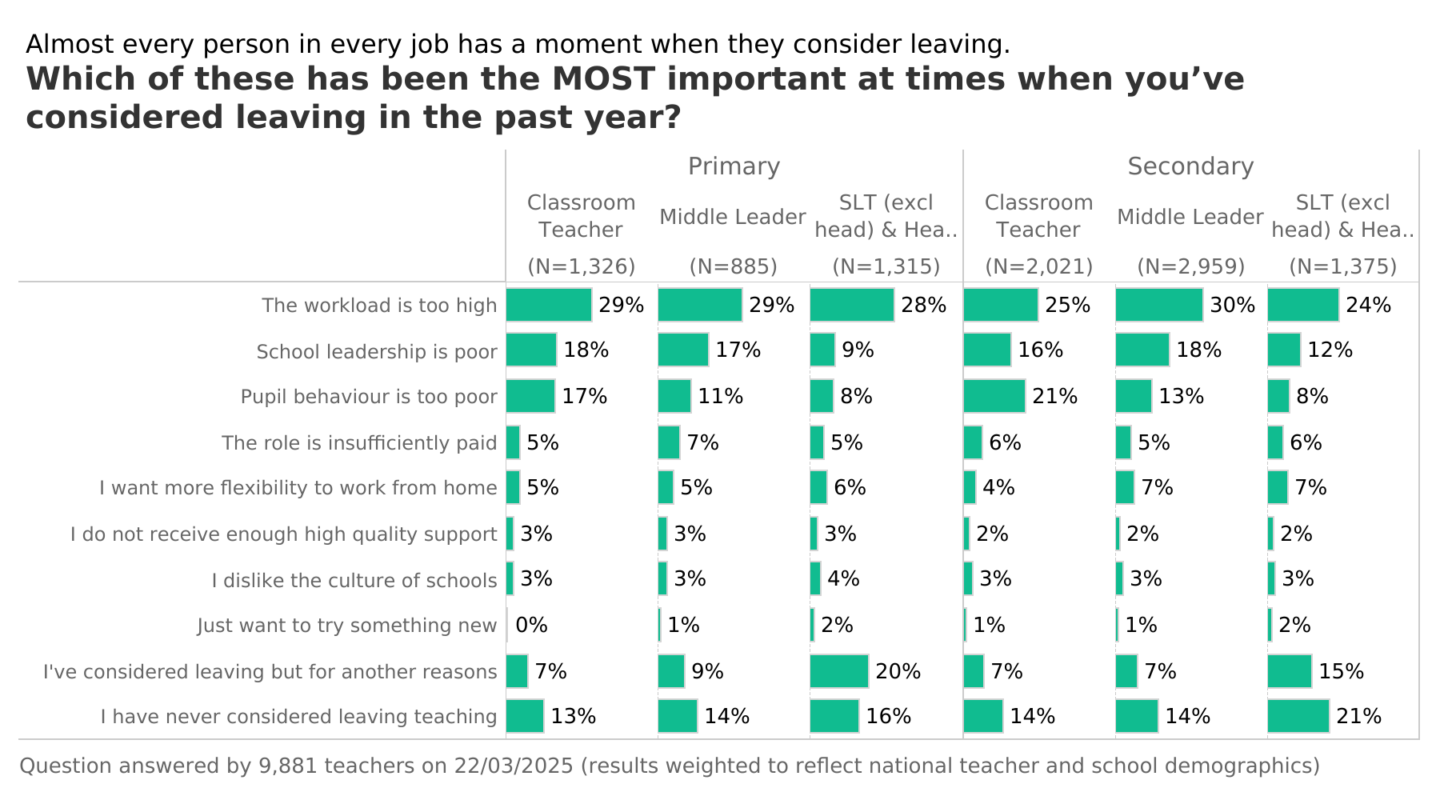
The return of coursework…or not?
Coursework was removed from GCSE courses with the exception of a few limited subjects in 2015. With curriculum reforms on the horizon, do teachers want it back?
The answer to that not only depends on your subject, but also on how long you have been teaching.
English teachers who have been teaching less than ten years (and therefore unlikely to have taught when ‘controlled assessments’ were used) were less likely to say “no” to coursework than their colleagues with more teaching experience (33% vs 40%).
A similar pattern can be seen among humanities teachers: 50% of teachers with less than ten years of experience don’t want coursework, but 62% of those with ten or more years of experience would prefer to keep coursework off the curriculum.
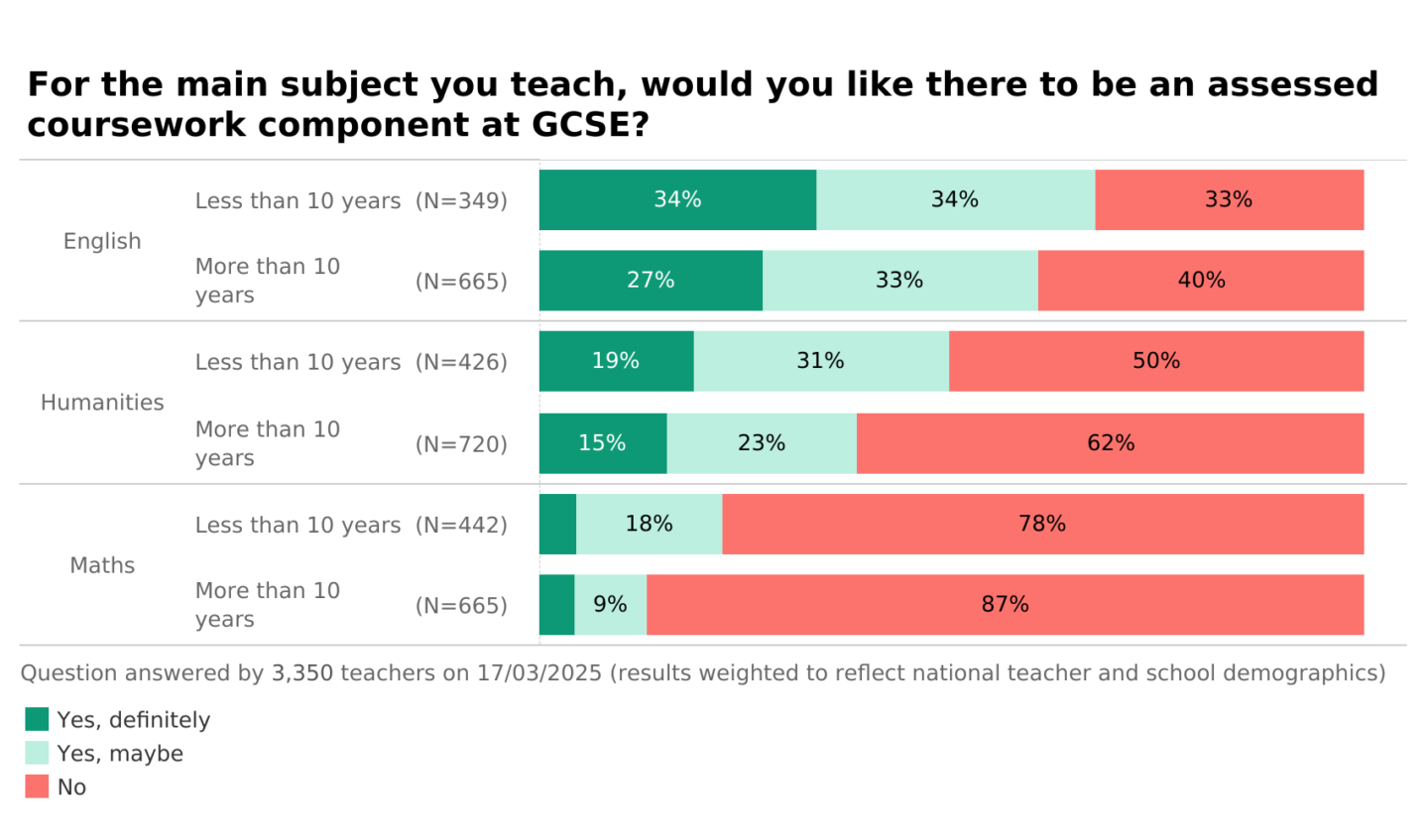
Drying hair after swimming
This question was sent in by a Teacher Tapper…are you expected to dry students hair after swimming lessons?
The good news is most teachers don’t have to deal with hairdryers and detangling spray – 94% are NOT expected to also dry the hair of their pupils. However, 6% do take on the role of hairdresser before they get back to school 😳.
Dress codes for staff
Fewer male teachers have to wear ties as part of their school dress code – and other rules have also been relaxed.
Male primary vs male secondary
Rules have relaxed compared to 2023 across all dress code areas.
🩳 Fewer male primary teachers are banned from wearing shorts (26% DOWN from 28%) and the same is true for secondary male teachers (63% DOWN from 69%).
👕 Shirts have seen a similar drop with just 22% of male primary teachers required to wear them today, compared to 32% in 2023. In secondary the shirt is also on the out, with 60% required to wear one DOWN from 67% in 2023.
👔 The old faithful, the tie, is also on the decline. 13% of primary teachers must wear one, DOWN from 16% in 2023. Similarly in secondary, 55% must wear one today, DOWN from 63% two years ago.
👞 Dress codes stipulating leather shoes have also dropped for men: in primary only 15% say shoes must be leather, DOWN from 17% in 2023; in secondary it is 40%, DOWN from 44% two years ago.
👨🏫 Suit jackets haven’t increased or decreased in primary (staying at 3%) and secondary have dropped, 21% DOWN from 24%.
And those without any rules at all? UP! 68% in primary, UP from 61%, and 24% in secondary UP from 17%.
Female primary vs female secondary
For women, the story is very different. in primary, dress code rules are much less common – and in fact have increased rather than decreased.
🩳 Female primary teachers are banned from wearing shorts (12% UP from 10%) and the same is true for secondary male teachers (63% DOWN from 69%).
👕 Just 1% of female primary teachers must wear shirts (no change since 2023) and 5% of female secondary teachers DOWN from 7%.
👔 Ties are not stipulated for ANY female teachers – primary or secondary.
👞 Dress codes stipulating leather shoes have had a TINY creep up: in primary only 3% say shoes must be leather, UP from 2% in 2023 (this is almost the same as no change at all as it is so small); and in secondary it is 10%, UP from 8% two years ago.
👨🏫 Suit jackets haven’t increased or decreased for women in primary or secondary (staying at 1% and 9%, respectively).
Daily Reads
This week our most-read piece was a special freebie from Tes for Teacher Tappers – Becky Francis on the curriculum review.
Have you seen a great blog you think would make a great daily read? Let us know by emailing england@teachertapp.co.uk and we will check it out!


